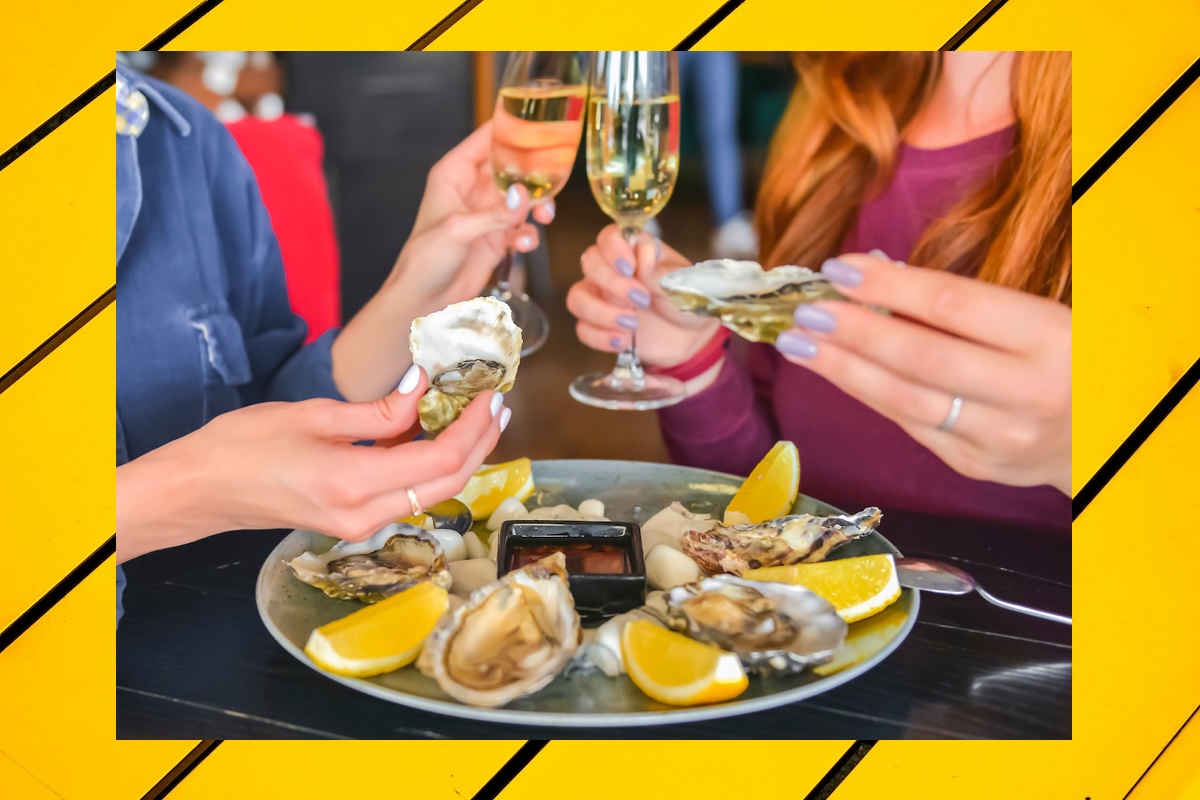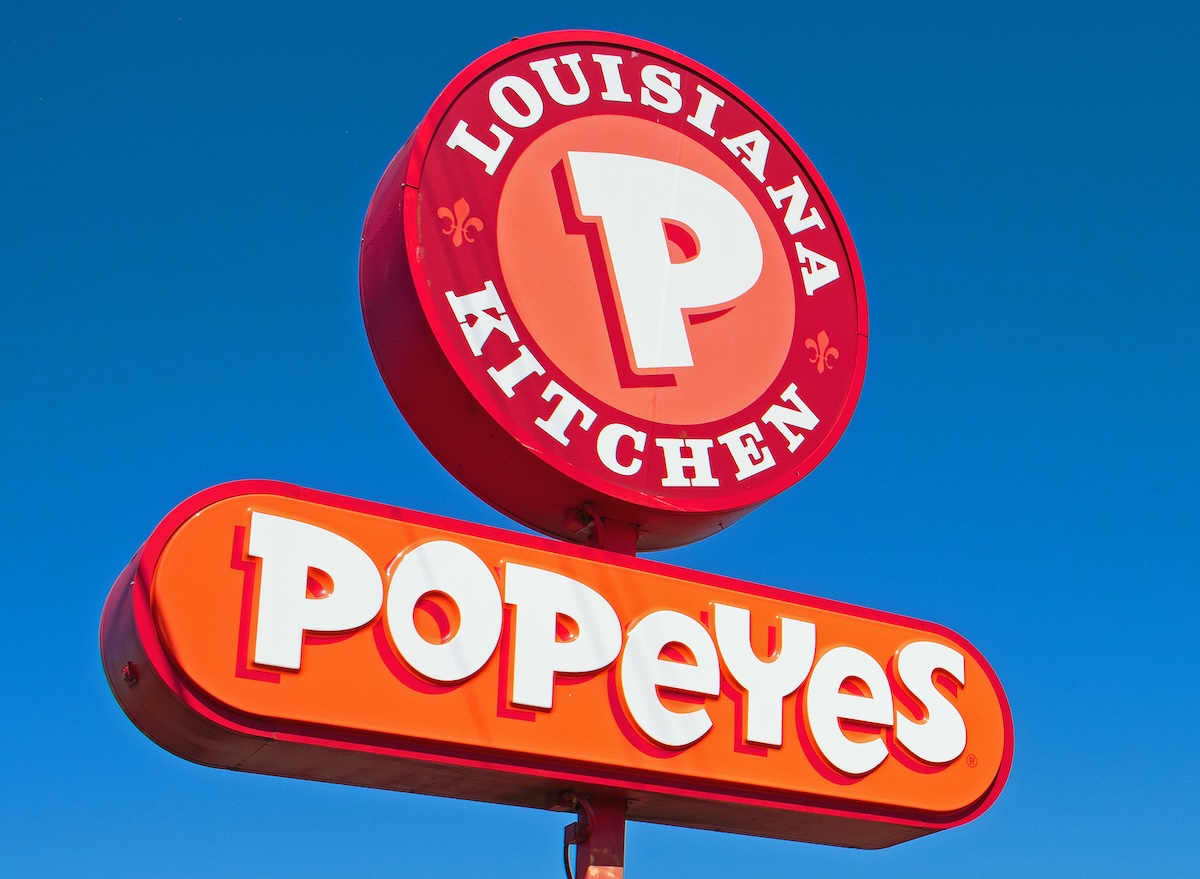Not only is fish healthy, but it’s delicious when prepared right. Dining out and ordering a seafood dish is common practice and while enjoying a mouthwatering meal should be a treat, especially at a high-quality restaurant, the experience can sour quickly if you make the wrong move.
It’s easy to compromise a good dish and have expectations fall short when making certain mistakes that are completely avoidable. From ordering fish on the wrong day to not paying attention to red flags, here are xxx things not to do according to chefs and seafood experts Eat This, Not That! spoke to.
Ordering the Fish Special


The servers always have a way of making a fish special sound so tempting, but Executive Chef Samuel-Drake Jones of Hudson VU in NYC says to skip it and find something else on the menu.
“Ordering a fish special can lead to a bad time, especially if you don’t trust the restaurant you are dining with,” Chef Samuel-Drake explains. “Fish has a much shorter shelf life than other proteins and is often pushed out at the end of its lifespan to save on food cost. Instead, try to order the most locally sourced fish.
Anthony Caturano, owner of Prezza, Tonno Glocuester, and Tonno Wakefield agrees
“If you see a regular menu item, like baked haddock, suddenly appear as a special in another form, such as fried haddock, it could be a red flag,” he says. “Often, this means the kitchen is trying to move older inventory.”
Caturano explains, “The real specials to look for are dishes that aren’t normally on the menu — a unique catch of the day or a seasonal offering. Those are more likely to be fresh and worth your attention.”
Not Asking When the Fish Arrived at the Restaurant


Fish doesn’t stay fresh long, so asking when the seafood arrived at the restaurant is a must, according to Chef Jason LaIacona, head chef at Miel Nashville.
“Most restaurant employees might default to stating the fish comes in fresh daily,” Chef Jason explains. “This may be true for some higher volume restaurants, but not entirely necessary.”
“If the fish, indeed, comes in daily that could be a half truth, as it does not translate to the fish that is being served to you at the moment but rather the one sitting on the shelf waiting to be sold after the one you ordered.”
He adds, “I have rejected numerous deliveries of “fresh” fish that were anything but; instead just ran out what we already had on hand then took it off the menu for the day. Why? Because the older stuff was actually fresher than what was attempted to be delivered earlier that day.”
Overcomplicating the Dish


A good fish doesn’t need to be overpowered with too much seasoning or ingredients.
“The biggest mistake restaurants make is overcrowding the fish itself, so guests can’t even taste the quality of the fish,” says Catch & Cut’s Managing Partner and Executive Chef André Bienvenu.
“Treat it like a steak and keep the dish as simple as possible. Season it with just a touch of salt and pepper and cook it using proper technique at the right temperature, and the fish’s natural flavor will stand out.”
He adds, “The goal is for the fish to take the spotlight, not the sides or sauces.”
Ignoring Local Options


Another thing Chef André advises is to keep it local.
“Guests often attempt to order seafood that they’re not familiar with and that is not from the area,” he says. “When it comes to ordering seafood, keep it as local as possible. Local seafood is in season and typically hasn’t been transported long distances or frozen. It also supports the local economy and fishermen.”
Dousing Seafood with Lemon Before Tasting It


Don’t fall into the habit of covering your seafood with lemon before taking a bite, says Corrie Duffy, chef and food blogger at Corrie Cooks.
“I’ve seen beautifully balanced dishes ruined by guests squeezing lemon over everything before even taking a bite. A touch of citrus can enhance flavor, but too much can completely overpower delicate fish. Taste the dish first — if it needs brightness, add lemon sparingly.”
Ordering Seafoods Fried (Especially Grouper + Oysters)


According to Kevin Hagerty, Director of Food & Beverage at Floridays Woodfire Grill & Bar in Bradenton/Anna Maria Island, Florida, one of the bigger mistakes people can make is ordering certain seafood fried.
“Some restaurants cook multiple products in the same fryer causing the true flavor of the fish you ordered to not taste the way it should,” he says. “In my opinion, fresh fish really shouldn’t be fried anyway.”
Per Chef Kevin, “The heavy types of frying oil and the batter used can really detract from a great piece of seafood, including oysters for example. Oysters are full of the briny sea and when you fry them, it all comes out so you’re left with something that is completely different from its intended purpose!”
Ordering Seafood Accompanied by Heavy Sauces


Don’t drown your fish in sauce.
“I always have concerns when I see restaurants pair seafood with heavy, cream or tomato-based sauces,” Chef Kevin explains. “This can sometimes mean that the seafood is not as fresh as it should be, so they are attempting to mask the lack of freshness. I personally think a slice of lemon should be the only thing on a nice, fresh seafood plate!”
Ordering Fish on Mondays or Early in the Week


It might not seem like a big deal to order fish on Monday, but it makes a big difference.
“Many diners unknowingly order seafood early in the week when it’s least fresh, since most restaurants receive their fish deliveries on Thursday or Friday for weekend service,” says Imam Mansoor Rafiq Umar, CEO and President at Halal Watch World.
Umar explains, “Fish sitting since the previous week has deteriorated in quality, texture, and flavor, making even well-prepared dishes taste off or fishy. Instead, order seafood on Thursday through Sunday when restaurants have the freshest catch available.”
He adds, “Ask your server when their fish was delivered: reputable establishments will gladly share this information and may even recommend alternatives if their current selection isn’t optimal.”
Ordering Raw Seafood at Questionable Places


Just don’t do it. Don’t take the health risk.
“I’d avoid ordering raw seafood, like oysters or sashimi, at restaurants where you’re unsure about how well they handle their ingredients,” says Rizwan Asad and I’m a food expert, and Founder of Chocolates & Chai.
“It’s not about being snobbish; it’s just that raw seafood spoils fast, and if the storage or sourcing isn’t spot on, it can go very wrong. I only take that risk at places I trust or that are known for doing it right.”
Ordering Fish from a Place that Doesn’t Specialize in Seafood


Sometimes you just get a craving for a good seafood dish, but don’t order fish from a place that doesn’t specialize in seafood.
“While many restaurants offer seafood dishes, not all are equipped to source or prepare it with the same level of care and expertise as a dedicated seafood-focused kitchen,” says Virgin Hotels Dallas‘ Executive Chef, Andy Papson. “This can impact freshness, flavor, and overall quality.
He adds, “That said, I want to be mindful not to discredit our restaurant or others that offer a broad menu. The key is to pay attention to what a restaurant is known for and where its strengths lie.”
Chef Andy explains, “If you’re dining somewhere that’s not primarily focused on seafood, it’s best to ask about what’s fresh or house-made — or consider choosing a dish that plays to the restaurant’s core strengths.”















Leave a Reply